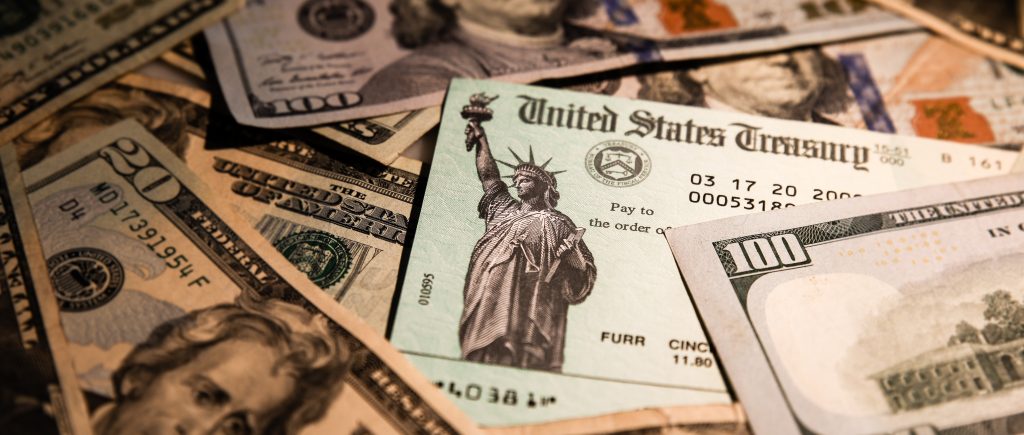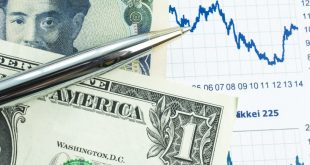Most Treasury yields slipped on Monday, as buyers returned to government debt following last week’s brutal selloff. Meanwhile, one part of the yield curve inverted for the first time in more than half a decade.
The yield on the 10-year Treasury note TMUBMUSD10Y, 2.465% traded at 2.427%, down from 2.491% at 3 p.m. Eastern on Friday. Based on 3 p.m. levels, the yield on Friday was the highest since May 6, 2019. The yield rose 34.5 basis points last week, its largest weekly rise since the week ended Sept. 13, 2019, according to Dow Jones Market Data.
The 2-year Treasury note yield TMUBMUSD02Y, 2.336% stood at 2.315% versus 2.299% on Friday afternoon, which was also its highest since May 6, 2019. The short-dated Treasury yield jumped 34.4 basis points last week for its biggest weekly rise since the week ended June 5, 2009.
The 30-year Treasury bond yield TMUBMUSD30Y, 2.573% was 2.539%, down from 2.603% late Friday, when it traded at its highest since July 25, 2019. The long bond’s yield rose 18.6 basis points last week.
Portions of the yield curve, a line plotting the difference between rates across maturities, continued to invert, with the yield on the 5-year note at 2.522% and the 3-year at 2.532%, surpassing the 10-year rate. The 5-year yield briefly traded above the 30-year rate, marking the first inversion of that portion of the curve since 2016, analysts said.
An inversion of the 10-year/2-year spread is seen as a reliable warning sign of future recession. The 10-year yield remains above the 2-year yield for now.
This year’s selloff in Treasury notes accelerated last week, sharply pushing up yields, which move in the opposite direction of prices. Government bonds are on pace this year to produce their worst returns since 1949, according to a note on Friday from Bank of America, which tracked global bonds weighted by world gross domestic product.
Treasury yields jumped last week as expectations for half-point rate increases from the Federal Reserve grew following remarks by Chairman Jerome Powell and other policy makers. Powell said last Monday that the central bank was prepared to lift rates by more than the usual quarter of a percentage point increment if necessary to rein in inflation, a position echoed by some other policy makers.
Meanwhile, measures of market liquidity have showed signs of stress in the Treasury market all month so far.
US Treasury market plagued with illiquidity as government bonds suffer worst week in years
Investors continued to track developments around Russia’s invasion of Ukraine. Ukraine President Volodymyr Zelensky said his country was “ready” to discuss neutral status with Moscow, while Russia offered little hope of an agreement, the New York Times reported. Russia signaled late last week that it was shifting its war aims in Ukraine to focus on the eastern portion of the country after its attempt to take the capital Kyiv stalled.
Over the weekend, the White House walked back from a remark by President Joe Biden, who said at the end of a speech in Poland that Putin couldn’t remain in power.
Overseas on Monday, China began locking down most of Shanghai, the nation’s financial capital and a city of 26 million, as a coronavirus outbreak surged. Oil futures fell sharply in response on expectations the lockdown will undercut Chinese demand for crude.
US data released Monday showed that the US trade deficit in goods fell slightly in February to $106.6 billion to mark the first decline in three months, but the gap stayed near an all-time high.
The 2-year, in particular, is a tough spot on the curve because of the unknown prospects for 50 bp (basis point) rate hikes. Fed speakers have been talking about trying to front-load the removal of accommodation, hence the big sell off since last month, but the specific timing of rate hikes over the next 2 years has implications for the valuation of the 2-year.

 Noor Trends News, Technical Analysis, Educational Tools and Recommendations
Noor Trends News, Technical Analysis, Educational Tools and Recommendations




